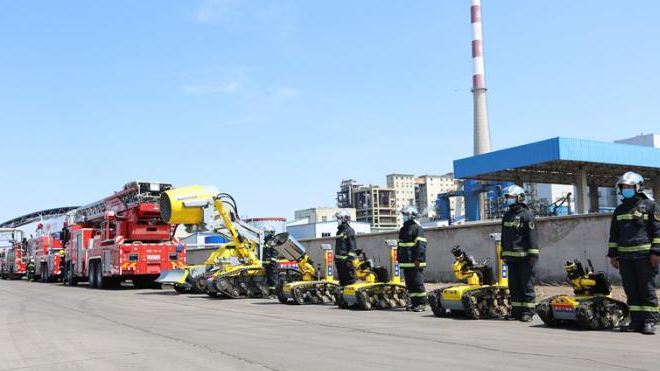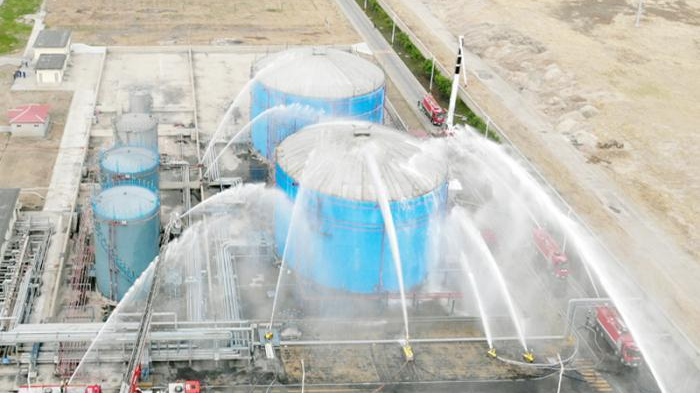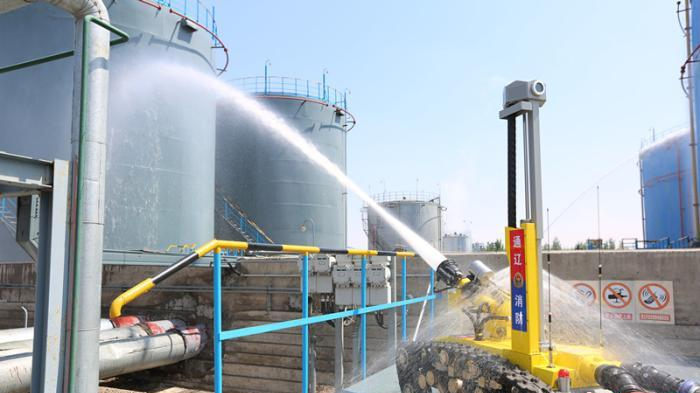China is enlisting for the first time a full-on robotic quad to assist in firefighting missions that are too hazardous or physically taxing for human rescuers.
The firefighting brigade of remotely operated vehicles and unmanned drones made its debut in Tongliao City in north China's Inner Mongolia Autonomous Region on Tuesday.
The robot unit, called the "Blade Formation," was set up in April 2020, and consists of seven reconnaissance and firefighting robots, two drones for fire detection and one transport vehicle. Putting the team together cost 20 million yuan (about 2.8 million U.S. dollars).
China has used robots in firefighting operations before, but this is the first time that the country has introduced an entire team of machines to support human emergency responders.
The fire extinguishing unit will take part in hazardous tasks that could seriously endanger the safety of human firefighters. They could be deployed for operations on industrial sites, or in confined and closed spaces where visibility might be compromised such as in underground locations, deep tunnels or large-space buildings.

The Blade Formation is the first large-scale firefighting robot unit that China has deployed. /Chinanews
The Blade Formation is the first large-scale firefighting robot unit that China has deployed. /Chinanews
A rescue drill mimicking a chemical disaster was held to test the coordinated firefighting capability of the Blade Formation members.
The scenario imagined a methanol storage tank catching fire and trapping people. Because of high temperatures and the risk of explosion, human firefighters could not approach the scene to extinguish the blaze. Robots stepped in.

A fire drill took place on May 20, 2020, to test the coordinated capability of the Blade Formation. /Chinanews
A fire drill took place on May 20, 2020, to test the coordinated capability of the Blade Formation. /Chinanews
An unmanned drone and robots equipped with water cannons were dispatched in an air-ground mission. The firefighting robots used 360-degree vision and an infrared thermal imaging system to detect the fire source and was directed to target it to control the fire.

A firefighting robot at the drill scene on May 20, 2020. /Chinanews
A firefighting robot at the drill scene on May 20, 2020. /Chinanews
The robots in use feature multiple other functions such as combustible gas detection and analysis, image and sound collection, autonomous obstacle avoidance, and on-site rescue.
Their deployment is expected to increase the safety of firefighters.
Since the founding of the People's of Republic of China, 636 firefighters have died while carrying out dangerous missions, according to data released by the Ministry of Emergency Management's Fire and Rescue Bureau in April this year.